by Amy Sampson | Jan 5, 2015 | General
The Association of Learning Technology held their first annual Winter conference last month at the University of Edinburgh. The event focused on Creative CPD in Learning Technology, an area we’re passionate about in our team. Professional development can incorporate creative approaches so it was great to see ALT hold an event around this subject.
ALT’s peer-based accreditation scheme CMALT was featured as one such approach to aid professional development. eLearning consultant David Hopkins has recently completed the CMALT qualification and gave a talk at the conference along with staff from UCL and Reading College.
Talks were streamed on the day and can be accessed using the links below.
CPD Rebooted – Creative Professional Development in Learning Technology AM
CPD Rebooted – Creative Professional Development in Learning Technology PM
by Amy Sampson | Dec 19, 2014 | General
It’s that time of year again when the Ed Tech team are optimistically looking forward for some some gadgets to magically appear in their stockings this christmas. We’re hoping we’ve made the good list and our festive wishes will be granted, here is what’s topping our lists…
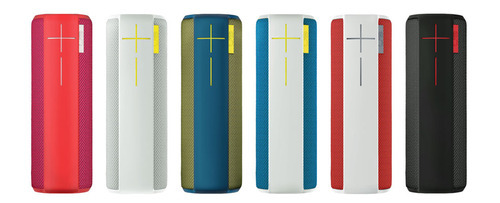
Damien would like a new Internal Solid State Drive to improve the speed of his macbook pro, and what better item to accompany this than an automatic brewing machine.

Topping Mark’s list is a wireless speaker, either a JAMBOX or a Ultimate Ears would do nicely. Also on the list is a recently funded Kickstarter project: Thingsee One is sensor packed smart developer device, however we’re still not sure 100% what it does!

Amy’s had her eyes on a KitchenAid mixer for a while, a nice brightly coloured one would be fab or failing that a Pure Evoke DAB radio would be much appreciated.

Steph would like a Chromecast so she can seamless stream from her devices onto her TV, perfect for chilling out on the sofa at Xmas.
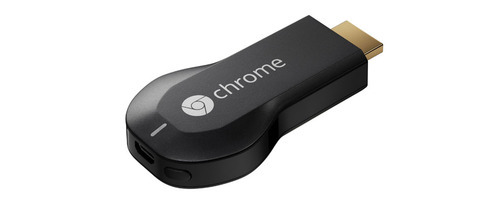
Oliver’s been on the look out for a Korg MS20 Synthesizer kit this musical equivalent of Meccano allows you to build you own classic synthesiser from scratch. Definitely something to keep you busy come boxing day.
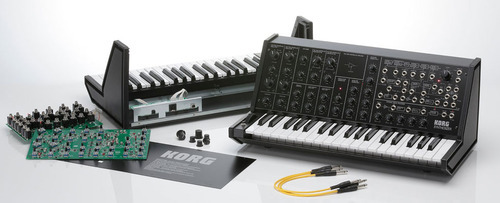
So all in all Santa a varied selection which would keep the team very happy! We hope staff and students have a great festive season, Merry Xmas, Happy New Year and we’ll see you in January!
by Amy Sampson | Nov 25, 2014 | General
Last Thursday saw Mark, Steph and myself don our finest and head out to the annual Staff Excellence Awards. We were fortunate enough to have been shortlisted for the Exceptional Contribution to the Student Experience award.
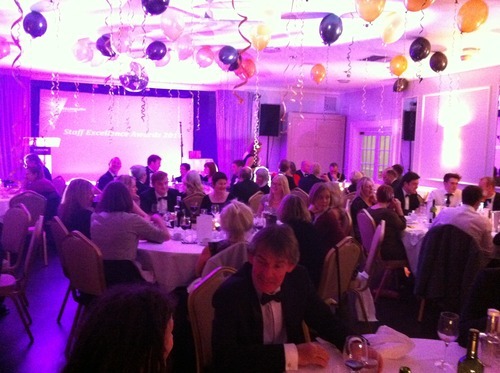
As a team we are really proud to be nominated for this award. Student experience is at the heart of what we do and so to be recognised in this area is a real achievement for us.
The event was a great opportunity to meet others at the University who had been nominated in additional categories such as Rising Star, Outstanding Contribution to Research and Innovation and Service Excellence.
With the DIME core team being nominated for the International Collaboration of the Year award it meant that Damien found himself in two categories on the night.
Each shortlisted entry was accompanied by a short video outlining the nominated team, individual or project. It was really great to hear so many testimonials from staff at the University passionate about the shortlisted entrants.
Judging finished earlier on in the evening and Rosie Sellwood picked up the Exceptional Contribution to the Student Experience award. Well done Rosie!
Congratulations also to the DIME Team (including ET’s Damien Hogan) for winning the International Collaboration of the Year Award.
It was a great evening and one we hope is repeated year after year!
by Amy Sampson | Sep 24, 2014 | General
The EdMedia World conference on Educational Media and Technology is an annual event hosted by the AACE (Association for the Advancement of Computing in Education). This years conference had delegates for 61 countries in attendance.

As part of the conference Educational Technology at Falmouth University in collaboration with Jarno Tolonen from Education Technology Services at Tampere University of Applied Sciences, Finland, had a submitted paper accepted for presentation. The paper addressed the theme “New roles of the instructor and learner” and is titled: “Empowering the Learning Event: New Roles for Learning and Teaching”.
The conference this year was held at University of Tampere, Finland between 23rd – 26th June, themes for EdMedia centred on seven major topics:
- Infrastructure
- Tools & Content-Oriented Applications
- New Roles of the Instructor & Learner
- Human-Computer Interaction (HCI/CHI)
- Cases & Projects
- Universal Web Accessibility
- Indigenous Peoples & Technology
A different keynote started each days proceedings followed by a discussion session should delegates wish to debate issues from the morning session further with speakers.
Professor Jill Jameson from Greenwich University started the conference with a keynote titled: Why we Need Distributed, Transformational e-Leadership and Trust in the Fifth Age of Educational Media and Technology. Some of the principles of educational e-leadership and technology Jameson has previously discussed in her article “e-Leadership in higher education: The fifth “age” of educational technology research” which featured in the October 2013 edition of British Journal of Educational Technology. This would be a good starting resource to reference should themes from the keynote prove of interest.
The importance of trust within an educational environment was particularly stressed as part of this presentation; it underlies the educational system – “Without trust we cannot stand” (Confucius). Jill recognised that there are many struggles currently being experienced in management as many advances are infrastructure led. Marketisation of the web has led to some resistance (overt or not) and a values based approach to e-leadership in education was recommended as part of the presentation; “To lead the people walk beside them” – Lao Tzu.
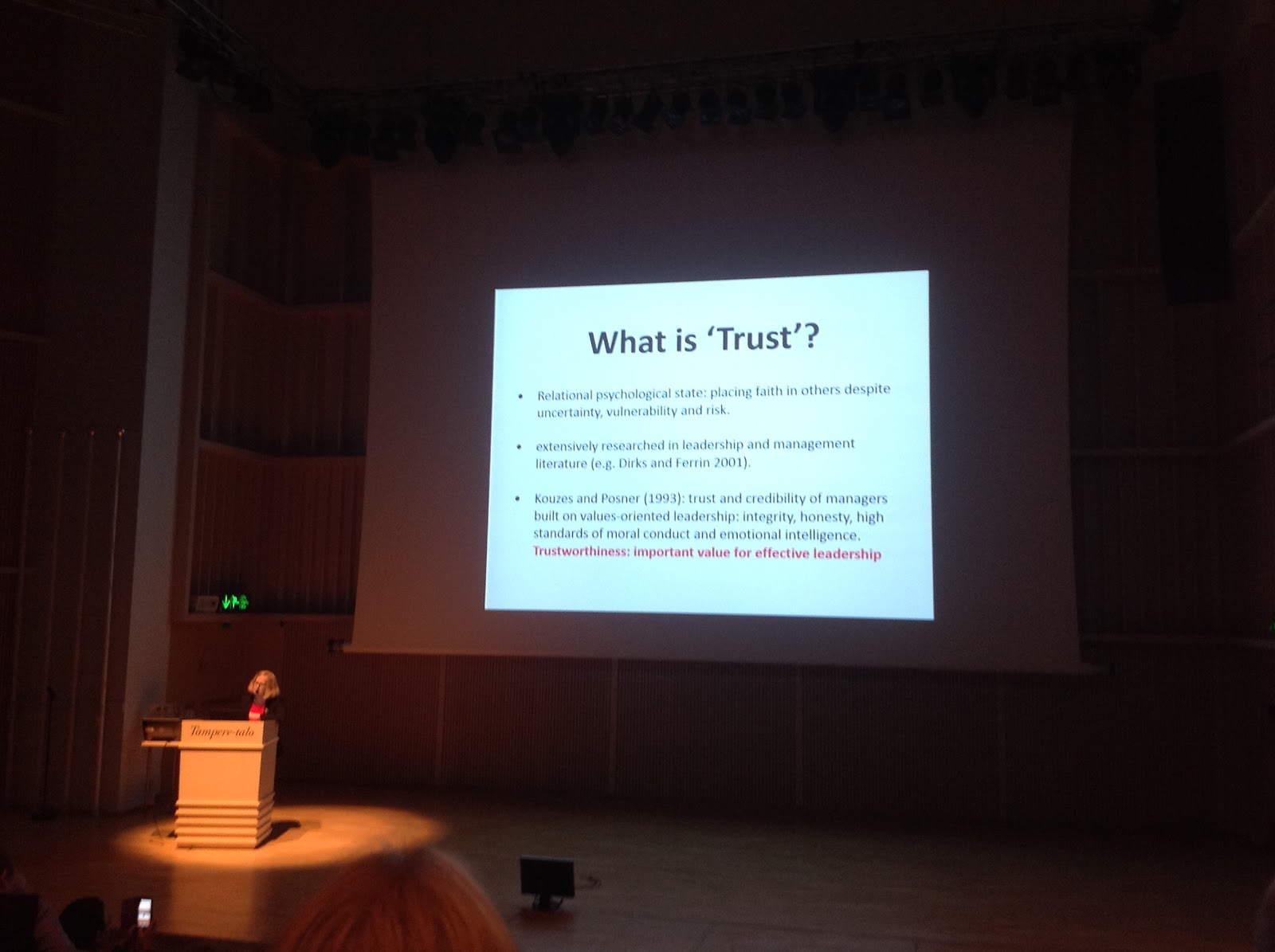
Many of the themes from this first keynote resonated with the presentation we were to deliver at the conference in the week. The importance of reevaluating roles and how to share practice within education were particular threads discussed in the subsequent discussion session which followed the keynote. E-leadership was one particular area where delegates were keen to share experiences in their institutions; innovations were portrayed potentially disruptive and chaotic when not managed effectively, a point which resonated with those in the room. Interestingly representatives from Singapore Universities highlighted that they work personally with the minister for education to develop educational strategies used in the country, one such benefit of having a smaller population.
The conference itself had representation from Finland’s Ministry of Education; senior minister Jouni Kangasniemi was an invited speaker for an afternoon session titled “Education in the Digitalizing World – Challenges and Opportunities as Seen from the Finnish Perspective”. The Finnish educational system has long been regarded as an exemplar model which places particular emphasis on the student experience (Sahlberg, 2007). I found this session especially relevant as it gave an opportunity to discuss common digital themes and issues from different institutional perspectives.
As part of the session Jouni introduced the Opeka website which uses a questionnaire system for teachers to survey their use of IT and technology in teaching. The results of which are then collated for other educational establishments to view and analyze. As a method for collecting information across schools its a great initiative and gives a feel for digital competence levels in staff. This process allows for more evidence based development opportunities, something the Finnish education system supports.
As part of this session there was much talk of assessment methods and the possibilities of fully digital submissions. The potential for assessment and technology was the theme in a keynote titled; “Learning Analytics: Welcome to the Future of Assessment” delivered by Simon Buckingham Shum. This session was a deep exploration into learning analytics; a phrase I’ve often heard bounded around to improve student assessment. Simon’s keynote critically explored analytics, while exploring how software is shaping education. He stated, “Integrity and trust is what all technology is built on“, the same values should be placed on the way in which we interpret and analyze information derived from these sources. Classification systems, types of analytics and the potential for analytics to shape education were all discussed as part of the keynote. The challenge of changing organisational and academic cultures to take into consideration these issues is of particular relevance when teaching and learning utilises student data. As part of his talk Simon referenced the blog http://learningemergence.net/; a joint collaboration between the Open University, University of Bristol and Incept Labs, it pays particular attention to emergent learning trends, specifically technological advances in learning and teaching and is well worth a visit.
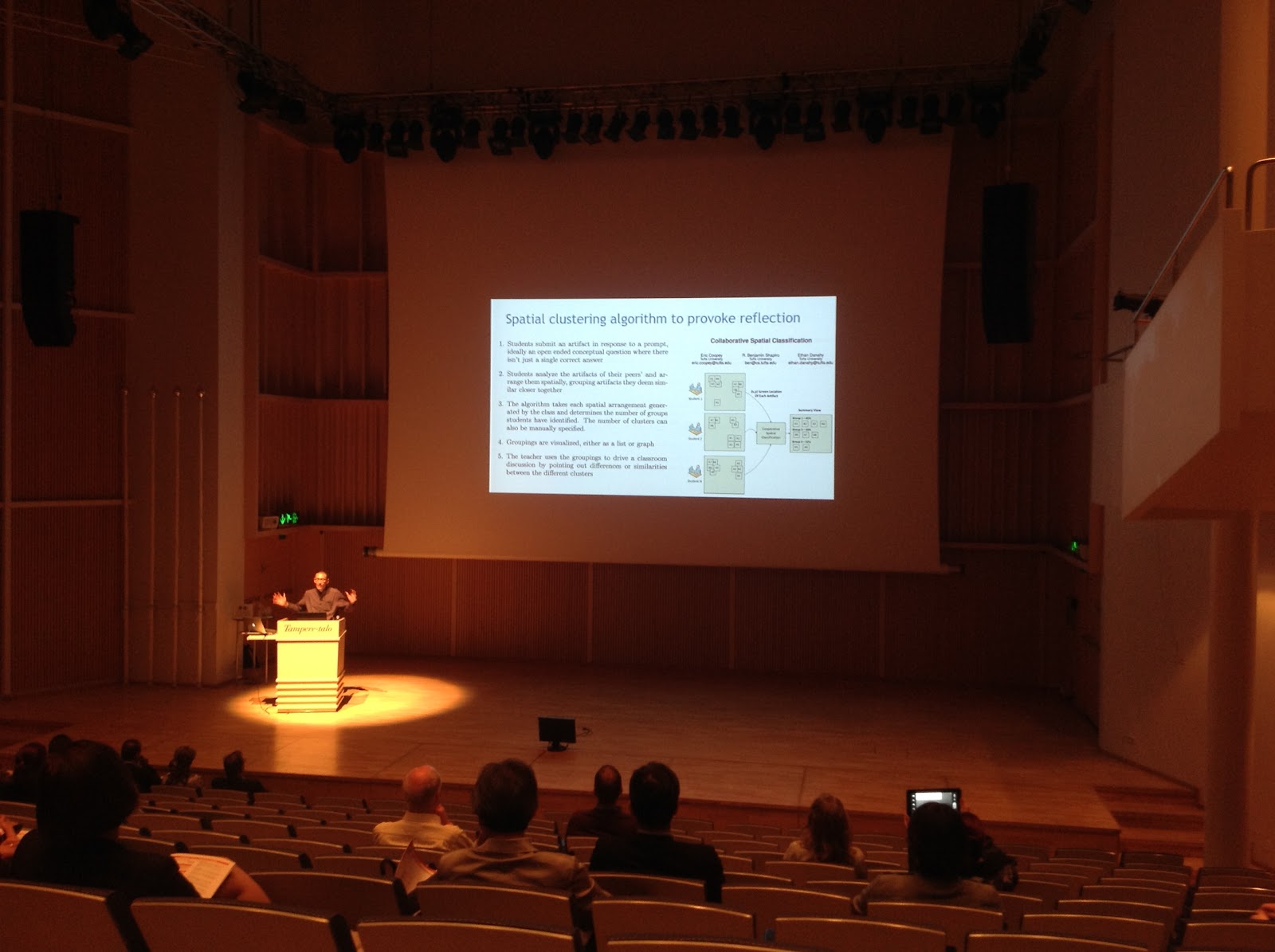
After Simon’s talk I went to a session which focused purely on learning spaces, something Finland in particular seem to have mastered. Spaces at Finnish Universities seem really in tune with what students want, and are majorly successful as a result. This session was delivered in the Oasis; an adaptable and inviting learning environment at Tampere University. Tiered seating, books, board games and bean bags littered the room, furniture was free to move meaning the resulting space could be configured to suit multiple teaching styles. It got me to thinking about the spaces we have within our University and whether these areas are flexible enough and suit the needs of our creative students.
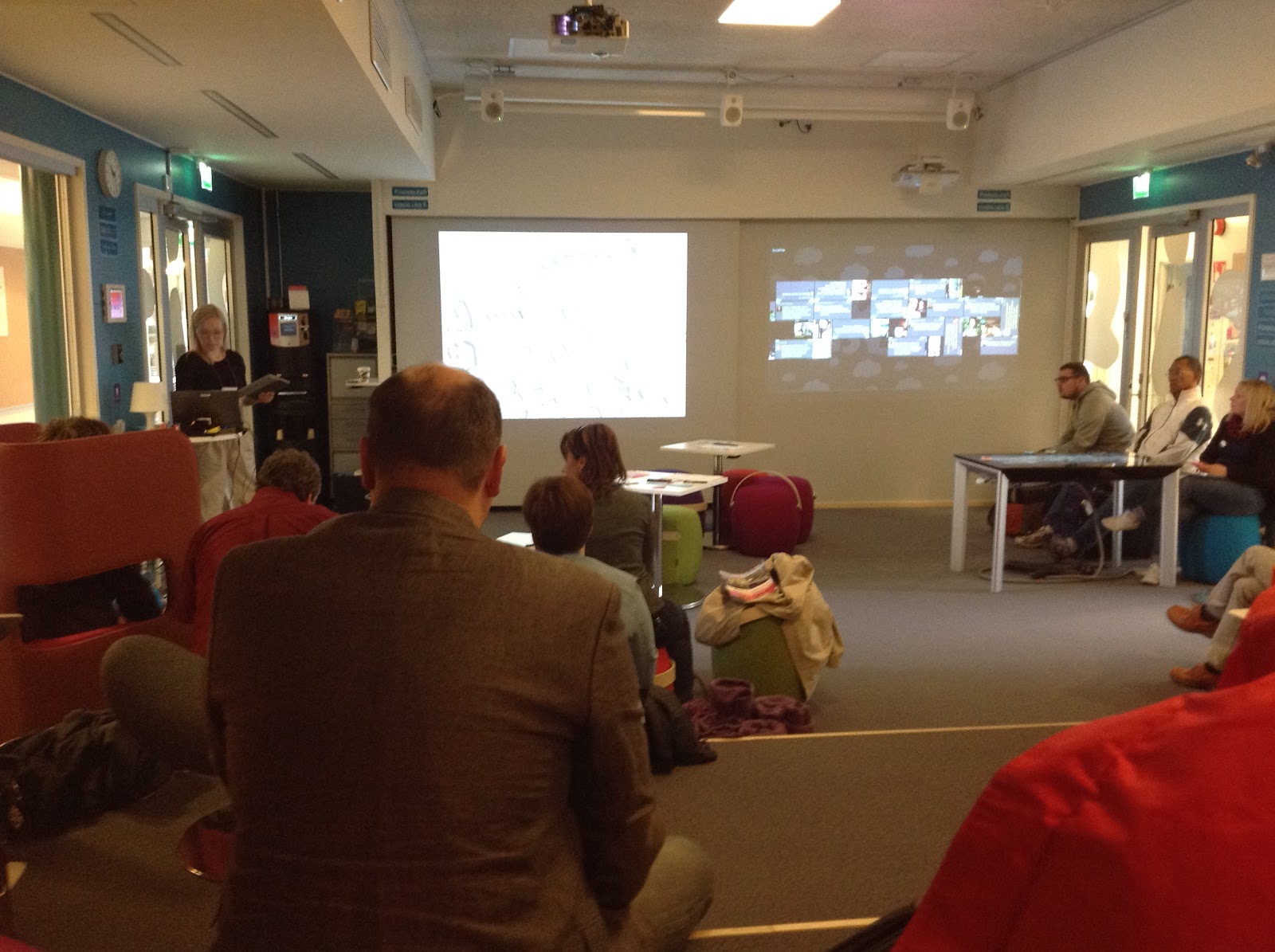
The session at EdMedia highlighted space case studies from five Universities; Bentley University, Tampere University of Technology, Tampere University and Loughborough University. The presentations regarding spaces were really valuable and while I felt more positive about some spaces than others, I found it immensely valid that staff with expertise in learning and teaching were given the space, both metaphorically and physically, to try out different configurations with the aim of enhancing learning and teaching at their universities.
We spend a lot of time telling our students to explore their creative sides, experiment with their work, approach things from a different angle. Shouldn’t we also do the same when it comes to teaching and learning environments?

The next session of the day saw a move from physical spaces to digital spaces. Thom Cochrane’s presentation “Mobile Social Media As a Catalyst for Pedagogical Change” was one of a few sessions that demonstrated examples of digital projects happening at AUT University.
Thom’s session thoughtfully explored learning with mobile devices, as with other forms of digitally enhanced learning it’s not just about the content delivery, technology has to be appropriate. Technologies of this kind inspire different styles of learning, as educators we should embrace these opportunities, especially if they encourage active participation from students and their devices. As with previous presentations, having the opportunity to explore and trial new styles of delivery and technical integrations has been imperative in enhancing student experience. Having the space to trial and explore is so important particularly in times of rapid technical advancement.
The afternoon saw Jarno Tolonen and myself present our session titled “Empowering the Learning Event: New Roles for Learning and Teaching”. We made a purposeful decision to involve the audience as part of our presentation; seemed only right given the nature of our paper. Challenging the roles of instructors and learners is something which needs to be confronted in a world where knowledge can be acquired digitally. As part of our session we challenged delegates who attended, asking them what it means to be a teacher in today’s connected society. Needless to say there were some very opposing views held within the room, it was great to see so many professionals approach the discussion in a passionate and engaging way. As part of the conference I hadn’t seen many presentations which had incorporated the delegates in attendance, with so much experience and educational expertise available it seemed an opportunity not to be overlooked. This approach definitely worked to our advantage, the room was full and we ended up being the only presentation in the session, meaning our original 15 minute allocated slot had been unexpectedly extended to an hour.
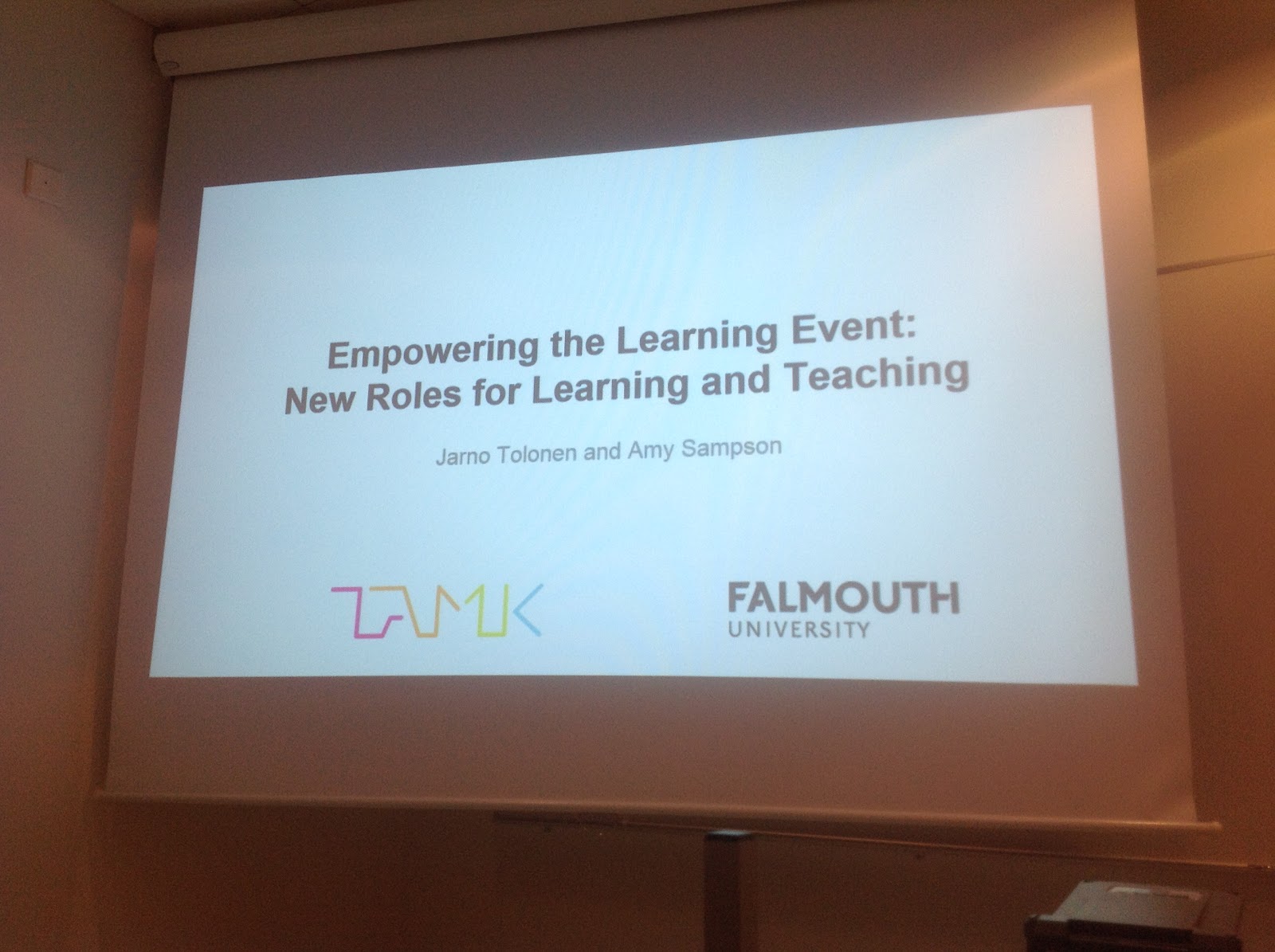
We chatted to delegates after the session and received positive feedback from those attending. As a result we have decided to keep investigating new roles for learning in teaching, we’re also hoping to incorporate some of the common themes which arose as part of the conference. Our partnership with TAMK has developed over the years and its really positive that we’re going to be working together in the future.
The themes from this years conference were so relevant and timely given current advancements in education, it was a great opportunity to be involved with the event and contribute some ideas from a educational technology perspective. Finland as ever was a beautiful place to visit and I’ve come away with a renewed energy to push for more appropriate spaces for teaching and learning. Our partnership with TAMK has also strengthened and we look forward to further projects in the future.
Sahlberg, P. 2007. Education policies for raising student learning: The Finnish approach. Journal of Education Policy, 22(2), 173-197.
by Amy Sampson | Jun 16, 2014 | General
This month Educational Technology presented at the annual HEA Arts and Humanities Conference held in Salford, Manchester. The conference was a great place to meet and debate with fellow colleagues working within higher education. Our accepted presentation focused on the personal side of technology adoption using the conference theme of heroes and monsters to portray different approaches. For a full review of the conference click read more below.
The 2014 HEA Arts and Humanities conference kicked off with an insightful keynote from Marian McCarthy which explored immersive aspects of drama and performance in learning and teaching. Marian’s presentation made several references to works of Maxine Greene including “Art and imagination” which speaks about the power of the arts and humanities to push boundaries. The immersive nature of performance was discussed amongst delegates with reference to Howard Gardner’s Multiple Intelligences theory.
“Learning is about attention, practice, refinement and the process is never complete” echoed McCarthy, “It takes us 30 or 40 years to even begin to know. Then we expect students to learn a thing in 30 or 40 minutes”. Marian’s approach and enthusiasm for immersive practice was really refreshing and seems a million miles away from the prescriptive exams that Michael Gove is proposing for creative subjects in secondary schools. “The root of the word assessment means to sit beside the students” states McCarthy, so why then is so much emphasis placed on marks and grades, she continued “The role of the arts is to awaken the imagination, not improve” and I would have to agree. This presentation was a really fitting way to start a conference that focuses on the arts and humanities.
This years conference was held at the Lowry in Salford which formed an impressive backdrop to a thoroughly engaging conference. In between sessions delegates were invited to explore the vast gallery spaces which featured many original works from Lowry himself in addition to portraits by Jonathan Yeo as part of a special exhibition.
Day two started with a second keynote delivered by Jesse Stommel from the University of Wisconsin-Madison. The presentation was titled “Zombie pedagogies: embodied learning in the digital age” and questioned if we can have a digital embodied experience, some in the audience counted this question by asking can we ever not have a embodied digital experience.
This session prompted me to reflect on a publication by Clifford Nass titled “The Man Who Lied to His Laptop” which reviews our interactions with computers and how we as individuals can humanise machines. At one point Jessie referred to his personal technologies as critters which live on him, but are our technologies more ingrained than that? Are they an extension of ourselves and our identity? I did find this session did what it said on the tin, come question time delegates were giving examples of students disruptively using technology to check their Facebook accounts and googling in the lesson. I couldn’t help but wonder why this was so heavily being perceived as a bad thing, students utilise their technology regardless, shouldn’t we therefore be including these means into lessons rather than fight against their inevitable use? I’m not stating that technology isn’t ever disruptive, but maybe the question should be how can we frame such technologies so they can be used to enhance educational experiences rather than hinder? I thoroughly enjoyed this key note as it addressed experiences which blended the digital and the arts/humanities. Jessie is also director and founder of online journal Hybrid Pedagogy, where more discussions around these and similar issues can be found.
The next part of the morning involved a series a smaller break out sessions. For the first session I attended a workshop hosted by Manchester Met University which explored their “My digital life Manchester” research project. This project focuses on architecture students and their relationships to digital technologies. We were encouraged to add to this discussion by completing questions presented through Nearpod and Kahoot! in relation to our own experiences of digital technologies. What did resonate from this session was the vast differences in individual use of technology, some individuals were on devices for two hours as soon as they woke while others resisted any form of technology and preferred traditional architecture methods. Technology use really does come down to individual preferences.
After lunch I presented a session on behalf of Educational Technology which highlighted how personal approaches to technology implementation and support can encourage adoption. Better relationships with teaching and support staff has been achieved since the move project and we now spend a lot less time sending emails; instead opting to phone or visit staff in person. During the session I demonstrated two very different approaches to technology implementation, afterwards I asked delegates to personify these approaches by drawing them as characters, either heroic or monstrous. At the end of the session we compared the two characters drawn as part of the session, the personal approach in all the drawn characters was far more heroic and less monstrous, something I was very relieved to see. As part of the session I took a Doxie in order to capture the characters. I’ve included some of the characters below.
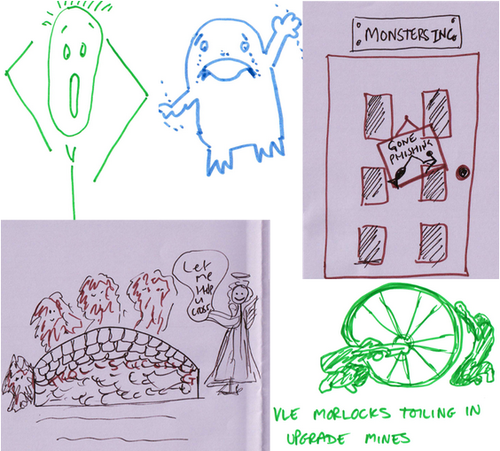
Presentations from University of Ulster and the Glasgow School of Art were also included as part of the afternoon session. Both tackled issues of engagement with technology to support learning and teaching. Vic Boyd from Glasgow School of Art asked how we can balance aesthetics, functionality and student engagement in art and design blended education. This presentation included particular reference to social media platforms and the VLE; using the interchangeable analogy of beauty and the beast to describe them both depending on the situation. This presentation reinforced that so much depends on context as to how these technologies can be applied and therefore successfully used.
The next part of the day revolved around “TEDish talks” from three presenters. These short 10 minute sessions followed the popular TED format in their delivery. The first session was presented by Roger Luckhurst from University of London and was titled “Tentacular Pedagogy”; there followed the most surreal 600 seconds of the conference. Tentacles followed krakens, cephalopods and sea creatures with a bit of Alien and Prometheus thrown in for good measure. New kinds of pedagogies likened to tentacles were championed and described as disembodied, yet intimate. Rogers presentation was unusual and captured the delegates imaginations, who knew so many tentacle references existed.
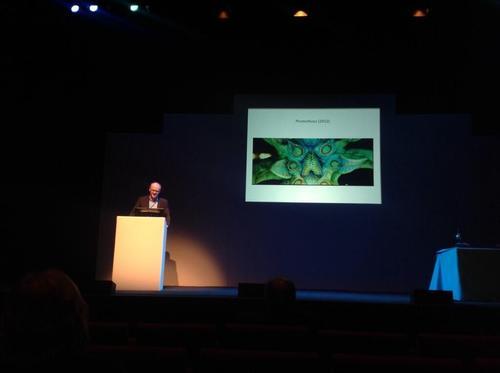
Patricia MacCormack from Anglia Ruskin University gave a 10 minute presentation on Teratological teaching followed by Charlotte Bosseaux from University of Edinburgh. Charlotte’s presentation, Liminal teaching: translating the vampire, focused on translation studies and the interpretation of meanings. To add a monstrous twist Spike from Buffy the Vampire Slayer was utilised as a translation case study for this presentation.
The final day of the conference commenced with further parallel sessions. “Shapeshifters and monster mash-ups” presented by University of Northampton reviewed curriculum changes particularly how to make modules and content more industry facing for graduates hoping to gain employment in their chosen fields, in this case television and film. The next presentation in this session was delivered by Norwich University of the Arts and was titled “Is a long time getting shorter?”. Jill Rodgers is a senior lecturer in Textiles at the University, during the session Jill discussed whether traditional skills can be developed by students in a world where fast moving digital based courses aiming to replicate industry are more common. Deadlines are often shorter with multiple projects running at the same time across platforms, meaning students are finding it increasingly difficult to engage with techniques which require a larger investment in time to develop skills. Mihaly Csikszentmihalyi work on the theory of flow was highlighted as part of this session, he describes how flow is the secret to happiness. Previous Norwich graduate Avila Leigh is part of a slow makers group based in the city, she champions ‘slow making’ within her work. Carl Honoré’s book In Praise of Slow was also recommended as a good resource when discussing ideas around this area, it’s currently sat on my desk waiting to be read!
The final presentation from this session was delivered by London Metropolitan University and was titled “Stop these aliens!” and addressed Stan Cohen’s notion of moral panic and applied this to journalism students studying at the institution.
The second set of parallel sessions featured a session delivered by Annamarie McKie from University of the Creative Arts which investigated the NNS survey through the eyes of Captain Cat. This session resonated with the delegates in the room, and we were afforded the opportunity to discuss our experiences of the survey within our own professional contexts. This presentation followed on from UCA’s “What’s behind the NSS” research project and proved to be very popular with all in the room who had a few words to say about the NSS process as a whole.
The final presentation from this strand was titled “Autonomous learning in the studio: balancing great expectations in hard times” and followed on nicely from the previous paper but used KIS data as a focus. Students and staff from Teeside University were at the session to discuss student expectations in particular relation to value for money, employment prospects and contact time with the course team. One of the delegates made a great comparison between gym membership and tuition fees; joining a gym doesn’t automatically guarantee weight loss and fitness in the same way that completing a degree won’t guarantee you a career in a chosen field.
The HEA conference provided an engaging space for attending delegates to debate issues specifically related to the arts and humanities, and I was pleasantly surprised to discover how much technology played a part in these conversations. Debates between delegates proved to be as interesting as the sessions themselves, I’ve come back to Falmouth with a host of information and further reading plus I’ve met some great individuals working within higher education arts institutions.









